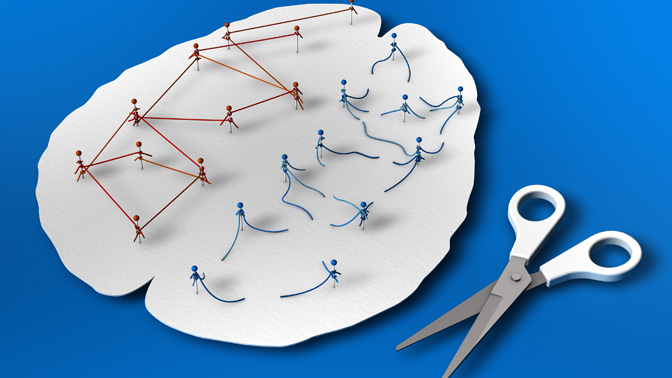
Few situations can be as frustrating as realizing that your mobile phone is not receiving a signal. When this happens, many of us have developed relatively easy strategies to re-establish a solid connection, such as moving closer to a cellular tower or changing cell phone providers.
Unlike getting better phone reception, however, it is not as easy to re-establish lost connections between the brain and organs of the body. This is because damage to the complex network of fibres that transmit and receive signals within the brain is often irreversible. Even if nerve fibres begin to regrow after damage, certain inhibitory signals in the surrounding environment prevent new fibres from re-establishing connections.
A study by Krembil Senior Scientist Dr. Philippe Monnier reveals a new strategy that may help overcome these inhibitory signals to promote the repair of damaged nerve fibres in the eye. Dr. Monnier and his research team focused on the regenerative properties of exosomes, encapsulated particles that are released from one cell type and taken up by another—an important form of cell-to-cell communication.
The team found that when exosomes from fibroblast cells (cells that are responsible for generating scar tissue) are taken up by nerve cells, a nerve fibre repair switch is turned on, promoting nerve fibre growth. This repair happens despite the presence of inhibitory signals in the surrounding environment, and is unique to exosomes from fibroblast cells, but not those of other cell types.
Using major connections between the eye and brain as an experimental model of nerve injury, the researchers demonstrated that treating the area of damage with fibroblast exosomes enhanced repair and prevented cell death.
"Our study is the first to show that fibroblast exosomes trigger a regeneration pathway in nerve cells," explains Dr. Monnier. "It also reinforces the notion that exosomes derived from different cell types have different functions—setting the stage for the development of precise regenerative therapies that can be used to repair the damaged nervous system."
This work was supported by the Krembil Foundation, the Heart and Stroke Foundation of Ontario, the Canadian Institutes of Health Research and the Toronto General & Western Hospital Foundation.
Tassew NG, Charish J, Shabanzadeh AP, Luga V, Harada H, Farhani N, D’Onofrio P, Choi B, Ellabban A, Nickerson PEB, Wallace VA, Koeberle PD, Wrana JL, Monnier PP. Exosomes Mediate Mobilization of Autocrine Wnt10b to Promote Axonal Regeneration in the Injured CNS. Cell Rep. 2017 Jul 5. doi: 10.1016/j.celrep.2017.06.009.




